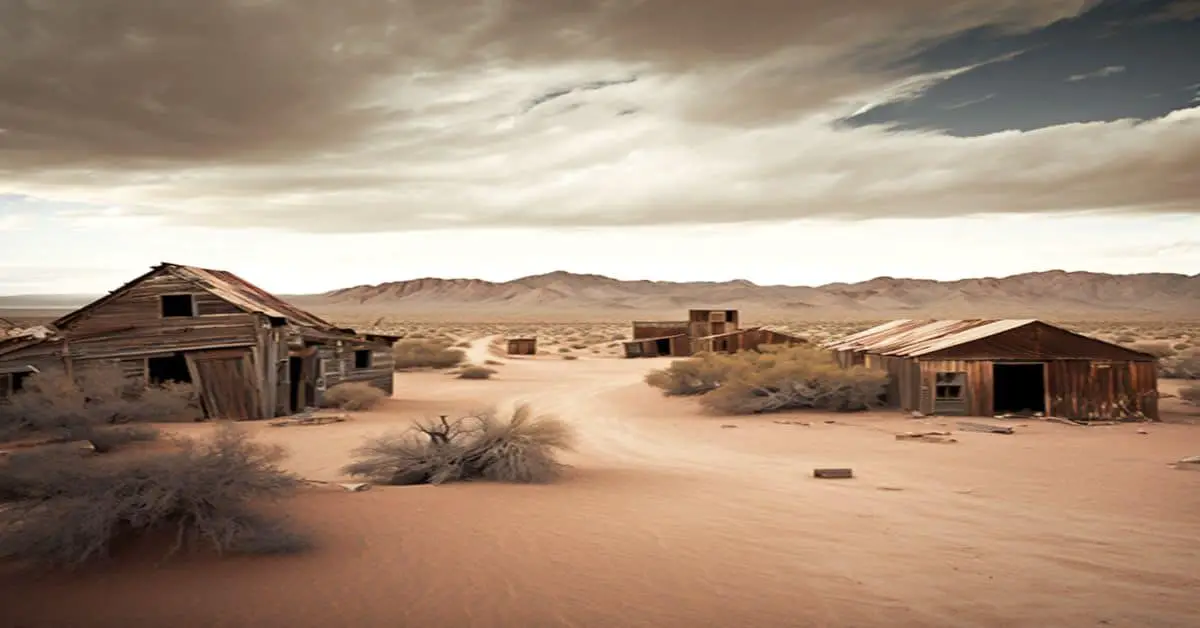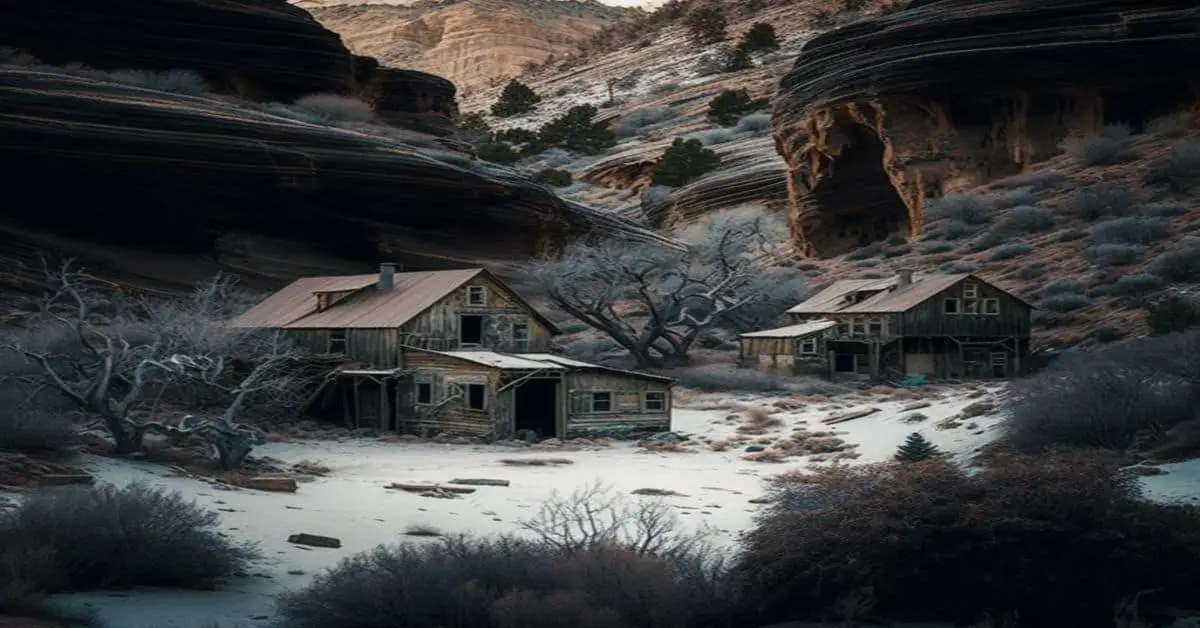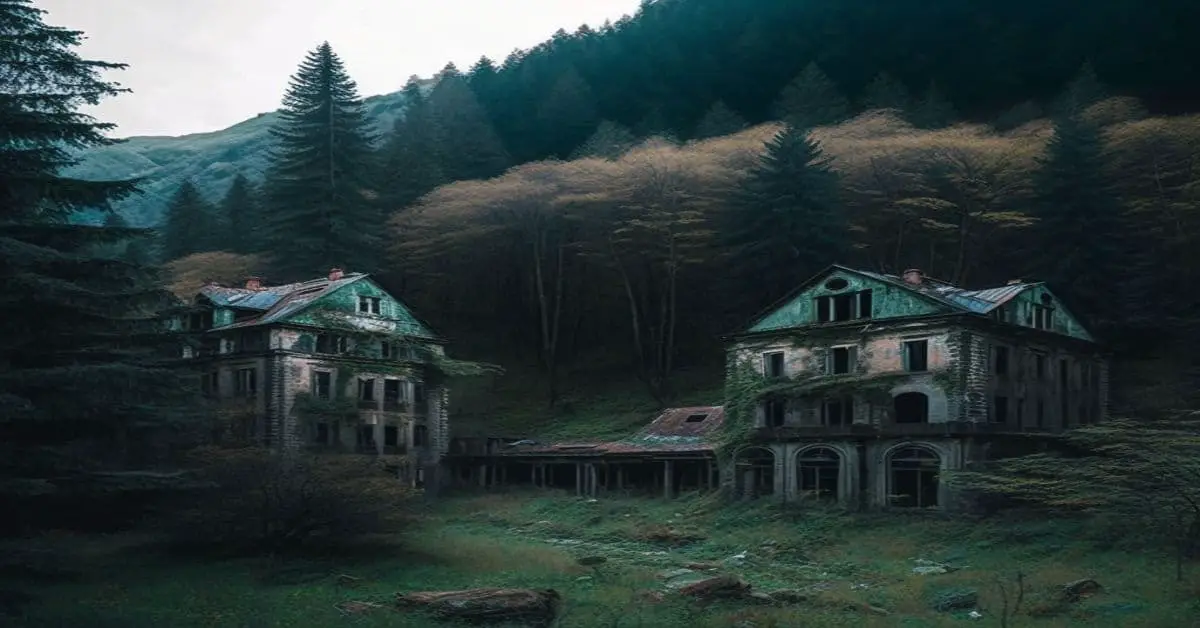Located east of Bakersfield in the El Paso Mountains, Garlock is a fascinating piece of California’s history that has been abandoned for years. Once a thriving mining town with several mills and a school, Garlock is now a ghost town with only a few weathered buildings and structures remaining.
Despite its desolate state, Garlock, California, has become a popular destination for history and adventure enthusiasts who want to explore the remains of this once-thriving town. Garlock’s climate is arid and hot, with temperatures frequently reaching over 100 degrees Fahrenheit during summer. Visitors should come prepared with plenty of water and sun protection when exploring the town.
Despite the harsh conditions, the town’s unique history and impressive engineering marvels continue to draw visitors worldwide. From the remains of old buildings to the tunnels and mines that once sustained the town’s economy, there is plenty to explore and discover in Garlock.
Those willing to venture off the beaten path will be rewarded with a glimpse into a bygone era and a deeper appreciation for California’s rich history.
Key Takeaways
- Garlock was a California ghost town in the El Paso Mountains, east of Bakersfield, listed in Ripley’s Believe It or Not.
- The town was founded by Eugene Garlock, who built the first mill to process ore hauled down from the Randsburg mines and had a school, which doubled as a church, and meeting place for the Garlock Literary Society.
- Today, the remains of Garlock are on private property and cannot be walked around. Still, several weathered buildings, a contraption once crushing ore, and two structures deteriorated severely.
- Burro Schmidt, who mined the Garlock area, blasted out a tunnel of solid rock with a few side passages that dead end, and short tours may still be available of this engineering marvel, which is said to have a lost chandelier room and to have become increasingly smaller towards the end.
Location and Climate
The location of Garlock, situated in the El Paso Mountains east of Bakersfield in Kern County, provides a warm winter and hot summer climate, making it a feasible destination to explore any time of the year.
This region experiences a Mediterranean climate, with hot and dry summers and cool, wet winters. The proximity of the mountains, with elevations ranging from 2,000 to 5,000 feet above sea level, contributes to the variation in temperature and precipitation. Visitors should be aware of the potential for extreme heat during the summer months and should come prepared with appropriate gear and plenty of water.
Despite the hot climate, Garlock, California offers unique opportunities for exploration and adventure. Nearby attractions include the Burro Schmidt Tunnel, a marvel of engineering hand-dug by William ‘Burro’ Schmidt in the early 1900s. Visitors can take short tours of the tunnel, which features a lost chandelier room and intersecting passageways.
The ghost town offers remnants of the past, with several weathered buildings and a preserved ore-crushing contraption. The best times to visit Garlock are in the spring and fall, when temperatures are milder, and the landscape is vibrant with wildflowers and desert flora.
History and Remains
Located in Kern County, east of Bakersfield in the El Paso Mountains, Garlock was once a bustling town that played a significant role in the California Gold Rush. Eugene Garlock built the first mill in the town to process ore from the Randsburg mines, which soon led to the establishment of several other mills. Garlock also had a school that doubled as a church and meeting place for the Garlock Literary Society.
However, the town’s prosperity was short-lived, and by 1903, the last residents had moved away, leaving behind only a few structures and remnants of the mining industry.
Despite being abandoned for over a century, Garlock’s impact on the California Gold Rush is still evident through the preservation efforts of various groups. Although the site is currently on private property and cannot be accessed freely, some structures, including a well-preserved contraption used to crush ore, can still be seen. A preservation group has also attempted to limit site damage with minimal preservation signage.
Despite these efforts, two structures, Mr. Schmidt’s shack and that of a past settler, are severely deteriorated but still standing. Through these remnants, visitors can catch a glimpse of Garlock’s history and its contribution to the mining industry in California.
Burro Schmidt’s Tunnel
Nestled in the rugged mountains of Kern County lies a remarkable feat of engineering: Burro Schmidt’s Tunnel, a testament to the determination and ingenuity of a lone miner.
Burro Schmidt spent 38 years of his life hand-digging a 2,087-foot tunnel through solid rock to connect two mining claims.
The tunnel, now on the National Register of Historic Places, is a popular tourist attraction and has become an icon of the Wild West.
Visitors to Burro Schmidt’s Tunnel can explore the remarkable engineering marvel and some interesting stories surrounding it.
Rumors persist of a lost chandelier room within the tunnel where Schmidt had some elaborate chandeliers hanging.
Additionally, his ghost has been said to be seen in the area.
As visitors make their way through the tunnel, they can also see an intersecting tunnel about a quarter of the way through where it is rumored Burro used to duck into when detonating dynamite charges.
Finally, the tunnel gets smaller and smaller as it nears the end, and it is said Burro became increasingly bent over with old age.
Frequently Asked Questions
What is the current ownership status of the property where Garlock is located?
The current ownership status of the property where Garlock is located is not clearly stated. The site is privately owned, and there have been legal disputes regarding access to the property. Development plans for the area are unknown.
Are there any plans to make Garlock accessible for visitors in the future?
Accessibility improvements and preservation efforts are underway for Garlock ghost town. The preservation group has made minimal signage efforts to limit damage and the site is currently on private property. Plans to make Garlock accessible for visitors in the future are unclear.
What kind of wildlife can be found in the Garlock, California area?
Wildlife sightings in the Garlock area include various reptiles during the hot season. Conservation efforts have been made to limit damage at the abandoned sites with minimal preservation signage. Visitors should be aware of the private property restrictions.
Has any significant archaeological or historical research been conducted at Garlock, California?
Garlock’s archaeological significance has not been extensively researched, but historical research findings indicate the town’s importance in the mining industry. Limited preservation efforts have been made, but the site remains largely abandoned and inaccessible.
Are there any other notable figures or events associated with Garlock’s history?
Garlock’s history includes notable residents such as Eugene Garlock and Burro Schmidt, who mined the area and left a unique engineering marvel. The ghost town’s influences and past residents continue attracting visitors today.


